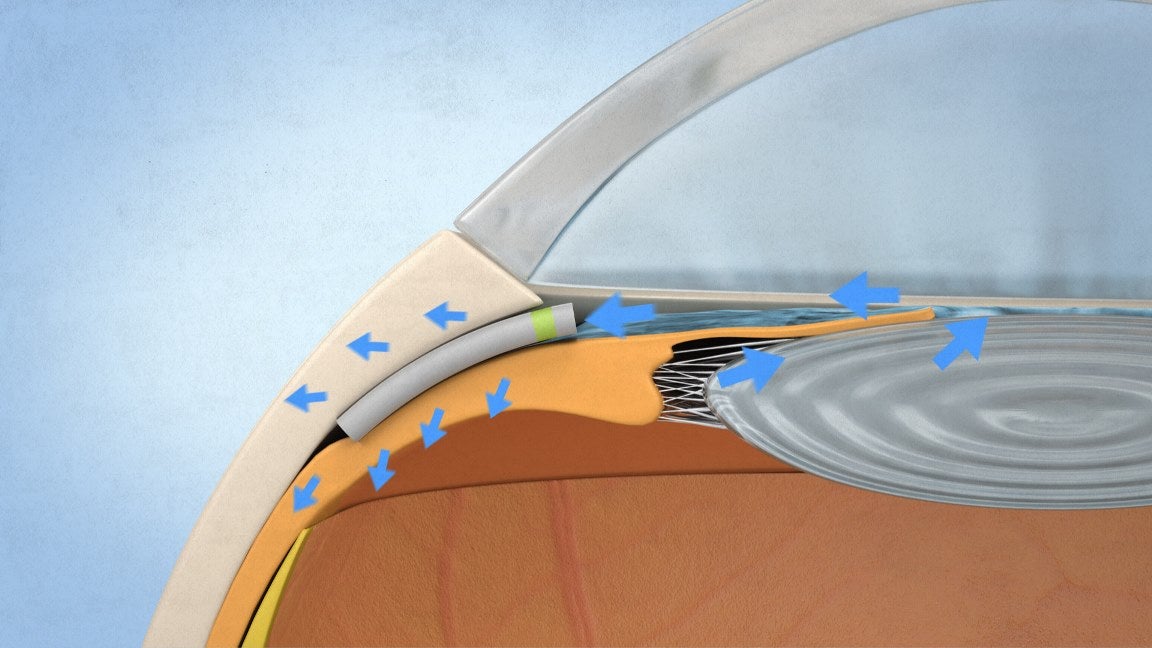
iSTAR Medical SA, a clinical-stage medical device company pioneering truly biocompatible solutions for glaucoma, today announced positive results from two clinical trials of its micro-invasive glaucoma surgery (MIGS) implant MINIject. Both studies showed consistently outstanding reduction of intraocular pressure (IOP) and reduced need for IOP-lowering medication in over 50 patients with open angle glaucoma, following standalone MINIject implantation.
Two-year final outcomes from iSTAR Medical’s STAR-I trial and six-month results from its European trial STAR-II have been accepted for presentation at the European Glaucoma Society (EGS) meeting, now postponed to December 2020 following the Covid-19 pandemic.
The STAR-I trial
The mean reduction in IOP in patients implanted with MINIject in STAR-I remained consistent around 40 percent throughout the study. Moreover, nearly half of the patients were medication-free at trial conclusion with a mean reduction of nearly one (0.8) IOP-lowering medication. A minimal reduction in corneal endothelial cell density (ECD) was observed.
“The final results of the STAR-I trial for MINIject two years after standalone implantation are particularly promising because they show both significant, sustained IOP reduction, and a large number of medication-free patients longer-term”, commented Doctor Ike Ahmed, University of Toronto, a global leading authority in MIGS.
“The iSTAR Medical truly biocompatible MIGS device enhances natural aqueous humour flow through the supraciliary space, which promises to be a reliable and safe approach for the treatment of patients with glaucoma,” Doctor Ahmed added.
The STAR-II EU trial
A total of 29 patients have been implanted with MINIject in eight European centres in France, Germany and Spain as part of the STAR-II trial and will be followed-up for two years.
- The mean reduction in IOP in these patients was 40 percent, with 55 percent of patients on no medication at six months.
- The trial met its primary endpoint by far exceeding the pre-defined success rate at six months. In fact, over 75 percent of patients achieved diurnal IOP between 5 and 21mmHg with at least 20 percent IOP reduction from baseline.
- A mean reduction of nearly two (1.8) IOP-lowering medications was achieved.
- Minimal reduction in ECD was observed.
“The IOP reduction seen in the six-month STAR-II European trial data is substantial, considering that it results from a standalone procedure rather than from joint intervention with cataract surgery, which may augment the outcomes,” stated Prof Philippe Denis, Head of the Department of Ophthalmology, Hôpital de la Croix-Rousse, Lyon, France, and a STAR-II trial investigator.
“The STAR-II results are consistent with six-month STAR-I data,” Professor Denis explained. “Most STAR-II patients were medication-free after six months, which overtime would help improve quality of life and reduce side-effects from medication use,” he added.
The iSTAR Medical biocompatible approach
MINIject’s truly biocompatible, soft and flexible material is designed to conform to the eye anatomy and to enable bio-integration of the surrounding tissue. This sustains natural flow and drainage by minimising fibrosis. Implantation is a single-step procedure which is swift and predictable.
“Our unique proposition is delivering outstanding performance in IOP and medication reduction overtime, to minimise disease progression and improve quality of life for patients with a minimally invasive device,” commented iSTAR Medical CEO Michel Vanbrabant. “Our approach integrates STAR material technology with a design tailored to the supraciliary space. These trial results confirm that MINIject is on track to provide a new powerful solution to glaucoma patients without the complications normally associated with more invasive procedures,” he concluded.
Results from the STAR-I trial will be presented at the upcoming virtual American Society for Cataract and Refractive Surgeons (ASCRS) annual meeting on 16 May.
Source: Company Press Release






